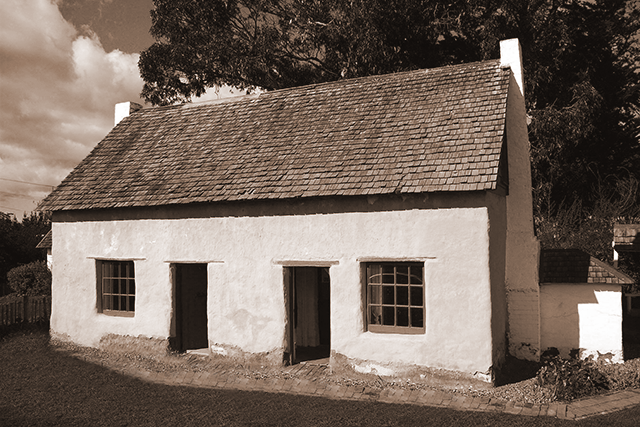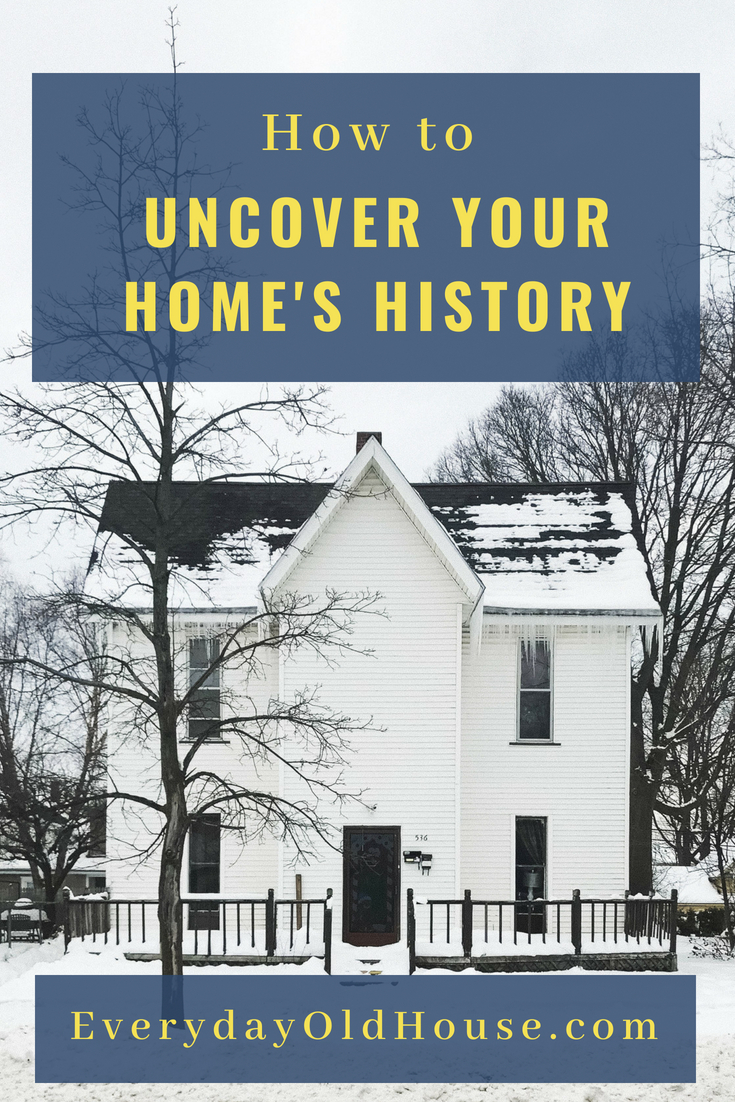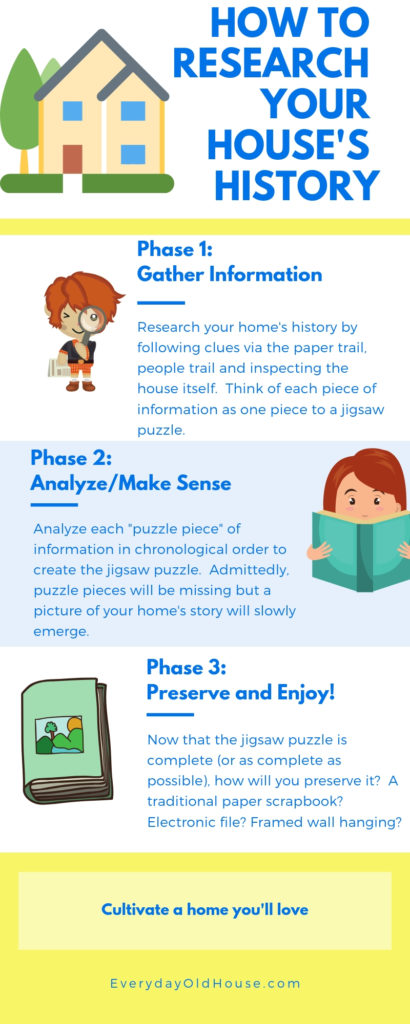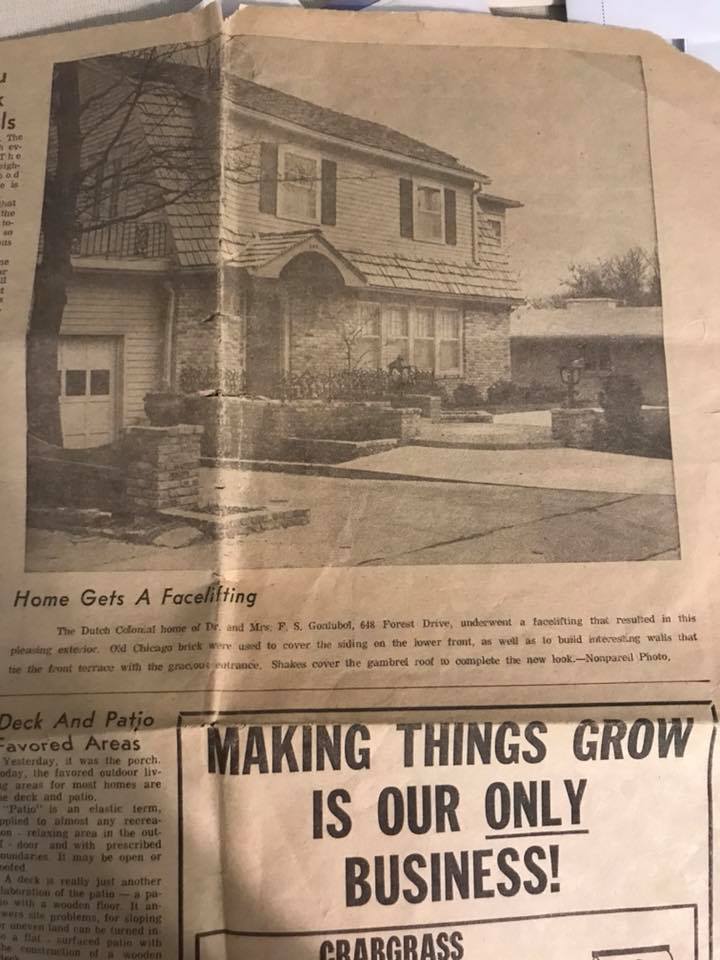How old is your house
How old is your house
Finding out the history and age of your house can be fascinating. Frequently people find themselves wondering: «How old is my house?» Most old houses have been added to and changed over the years, and few houses retain all their original features. Discovering the history and age of your house can also provide an insight into the lives of the owners. When looking at the different evidence for how old your house is, don’t take everything on face value. Georgian windows may have been replaced by Victorian ones, a new facade may have been added, and even dates inscribed in stone on the house may not be original but may indicate when upgrades or extensions were done.
It can be fascinating to find out the history of your house. There are lots of free resources. Look at all the evidence for the age of a house and balance out different aspects to find a likely date to help answer the question «How old is my house?» or When was my house built?
The first stop to find out the age of your house in the UK is probably to look at the title deeds. If you have a mortgage then these will normally be held by your mortgage provider or bank, who may make a charge for letting you see them! >more
Very often old maps can give you some clue as the age of your house. Nineteenth Century Ordnance Survey Maps can be viewed free at Old Maps using your postcode. >More
You can also visit your local library or local records office for local old maps.
It’s always possible that your neighbours may have some helpful information about your house history, particularly if the style of their house is the same as yours. Even the names of local roads can help if they were named for significant historical or local events or people.
All of these can be relevant. Whether the building has casement or sash windows, whether or not it has a damp proof course, whether it has been plastered with gypsum or lime can all give an indication of your house history.
Some census records and local Kelly’s directories are available free online. These may be particularly helpful if your house was used to run a business or was owned by someone of local importance. They may also be available at your local library. More on Censuses
Find the age of my house? When was my house built?
People may need to find the age of a house for a number of reasons. It could be for buildings insurance purposes or could just be that they are interested in the history of the house they now live in. Unfortunately you cannot always discover the age of my house by postcode as one postcode will probably have houses from different eras.
Finding out the history and age of your house can be fascinating. Frequently people find themselves wondering: «How old is my house?» Most old houses have been added to and changed over the years, and few houses retain all their original features. Discovering the history and age of your house can also provide an insight into the lives of the owners. When looking at the different evidence for how old your house is, don’t take everything on face value. Georgian windows may have been replaced by Victorian ones, a new facade may have been added, and even dates inscribed in stone on the house may not be original but may indicate when upgrades or extensions were done.
It can be fascinating to find out the history of your house. There are lots of free resources. Look at all the evidence for the age of a house and balance out different aspects to find a likely date to help answer the question «How old is my house?» or When was my house built?
The first stop to find out the age of your house in the UK is probably to look at the title deeds. If you have a mortgage then these will normally be held by your mortgage provider or bank, who may make a charge for letting you see them! >more
Very often old maps can give you some clue as the age of your house. Nineteenth Century Ordnance Survey Maps can be viewed free at Old Maps using your postcode. >More
You can also visit your local library or local records office for local old maps.
It’s always possible that your neighbours may have some helpful information about your house history, particularly if the style of their house is the same as yours. Even the names of local roads can help if they were named for significant historical or local events or people.
All of these can be relevant. Whether the building has casement or sash windows, whether or not it has a damp proof course, whether it has been plastered with gypsum or lime can all give an indication of your house history.
Some census records and local Kelly’s directories are available free online. These may be particularly helpful if your house was used to run a business or was owned by someone of local importance. They may also be available at your local library. More on Censuses
Find the age of my house? When was my house built?
People may need to find the age of a house for a number of reasons. It could be for buildings insurance purposes or could just be that they are interested in the history of the house they now live in. Unfortunately you cannot always discover the age of my house by postcode as one postcode will probably have houses from different eras.
Blog HM Land Registry
Ten years ago, I stood on the front doorstep of my new home, waiting for the delivery lorry to arrive. An older couple walked past my house and then doubled back to look up at it.
I asked if I could help them and the man explained that he was researching his family history. His great-grandfather had bought and lived in my house when it was newly built, back in the Victorian period. Through conversation, I learnt the exact date was 1897.
What should you do though, if you want to know the exact age of your house and don’t have a friendly amateur historian to hand!
How HM Land Registry can help
Some people get in touch with us to ask “How old is my house?”, often because they need this information to take out building insurance.
We keep records of land ownership, not what’s built on the land. If your property was sold by the developer who built it though, you could find out its approximate age using the date of the first transfer or lease by the developer, as this date is often referred to in the register.
If your property was not sold by the developer who built it, we won’t have any information about its age.
Other ways to find out how old your house is
If you are in the process of buying the house, ask your seller or their agent. As part of a sale, the seller must complete a ‘Seller’s property information form’ which may contain the property’s age.
If you have a mortgage, your survey may say how old the building is.
Your local authority may have a record of when planning permission was granted.
Ask any neighbours who live in similar properties, if they know the age of theirs.
Find the age of older properties
If you have an older house, you could:
Sharing and comments
Share this page
97 comments
Comment by Michael Limbrey posted on on 26 January 2018
With unregistered title the whole history was available.
Comment by D Bushnell posted on on 16 February 2018
Why can’t I just put in my address and get an answer back as to when it was built
Comment by AdamH posted on on 19 February 2018
Comment by Stanley posted on on 30 June 2020
My insurance company are insisting on the build date or they can not quote.
is this a get out clause so if I say dec 1965 and it was actually nov 1965 they dont have to pay out.
Comment by AdamH posted on on 30 June 2020
Comment by Adam W posted on on 20 August 2020
Hi Stanley,
The build date of the property can only be used to decline a claim if it is:
(A) a material fact, i.e. has a direct impact on the terms of the policy
(B) deliberately or recklessly misrepresented.
If you take a guess as to the age of the house and get it wrong this doesn’t give your Insurers the right to decline a claim.
Comment by A Samji posted on on 09 September 2020
Hi. As Land Registry do not store build dates, one can go to local estate agents or even knock on a few doors nearby to get an idea. The valuer or surveyor of your property would have had to an estimated build date as well. If the property is reasonably new you may be able look this up through planning applications. Sometimes you can get the answer just by searching the web.
Older properties often contain high risk materials, such as asbestos, or materials that are difficult or costly to replace. These materials could increase your perceived level of risk and push you into a higher home insurance bracket.
I don’t think an insurer will penalise you if you have carried out a search with due diligence. If the Land Registry doesn’t have that information then who are you to say?!
Comment by Mary Kernan posted on on 26 February 2018
Will the register tell what your property is built on?
Comment by AdamH posted on on 26 February 2018
Comment by Karen Abbott Raphu posted on on 03 March 2018
My mother has just passed away,
She told me her first home as a small child was Tyler Treet Huts. Can anyone tell me more please?
Comment by AdamH posted on on 05 March 2018
Comment by smh posted on on 18 September 2018
Comment by Billy posted on on 24 April 2018
When was my house made
Comment by AdamH posted on on 25 April 2018
Comment by Marguerite Comber posted on on 01 May 2018
Thanks for such a helpful blog M.
Comment by B b posted on on 09 May 2018
What was on land my house was built on before houses
Comment by AdamH posted on on 10 May 2018
Comment by Jon Burtwee posted on on 24 May 2018
How old is the land used to build my house on, is it older than my garden?
Comment by ianflowers posted on on 25 May 2018
This blog also sets some options for tracing the ownership of an older house which may also give some information/clues as the ownership of the land itself.
Comment by Mr. C. posted on on 31 May 2018
I need advice on fence ownership. The boundary fence on one side at the front of my property was originally shared when the properties were built back in 1976’ish. I have written proof that in 1998 the owners of the neighbouring property built a new fence there. Consequent owners of the property have maintained it. The latest owner who moved in around 2010 has always denied responsibility for maintaining the fence. They eventually replaced some fence panels after I explained about the history.
The last year or so the fence has become very dilapidated and finally one panel was all but destroyed in a storm in January. After months of not being safe to park my car on my drive safely the dispute about ownership of the fence has resurfaced. I have said to my neighbour that I will deal with the fence and she has agreed.
Can someone advise me what is the least costly way of documenting my ownership of the fence before I spend a lot of money bringing it up to a good standard?
Comment by AdamH posted on on 01 June 2018
Comment by Mr. C. posted on on 01 June 2018
Beginner’s Guide to Tracing Your House’s History [Megapost]
Last updated on March 28th, 2022 at 12:15 pm
Have you ever wondered about the history of your house? For example, wondered what year was it built? Who owned it before you and what they were like?
We all have a past, some quite colorful.
If it could, what stories would your house tell? Perhaps it was a stop on the Underground Railroad during the Civil War. Or the previous home of a local personality, like a celebrated politician who did great things for your town. Or maybe a notorious criminal who did quite the opposite….
Why I’m Researching the History of My House
When we purchased our house in 2012, real estate records showed that it was built in 1916. So in 2016, on its 100th year birthday, we decided to throw it a party. Admittedly, we aren’t the type of people who really need a reason to throw a party, but.
Organizing this party got me thinking about homeownership. We homeowners spend a significant portion of time in their homes, raising families, hosting friends, making memories.
It’s the backdrop for so many family photographs marking milestones in our lives. For us, the fireplace sets the scene for our annual Christmas card photos. The front steps mark the spot for first day of school photos. In a way our houses are part of the family. And shouldn’t we learn more about the members of your family?
Researching a house is like any long-term relationship. Each day, you learn a bit more about the people you live with, so wouldn’t it make sense to learn a bit more about the place you live in? The space you call “home”?
Yet, I know nothing about my house. Nothing about its past inhabitants, nothing about my new town. I wanted to learn more.
So I starting digging around to learn how to uncover my house’s past. And I discovered so many resources out there for homeowners to trace their home’s history (also known as house genealogy).
I’ll share these resources throughout this guide, as well as have a dedicated “Resources” section at the end of this post.
I’m so glad that I researched my little old house. (I haven’t finished researching yet). And I think you will be too. Truth be told, I didn’t expect much from my little plain house. But I’ve been pleasantly surprised with the what I’ve found to date, and hopeful that I will find even more interesting facts as I continue to research.
Before we dive in about how to trace the history of your home, first a few notes about this guide:
Disclaimer
I am just an average homeowner with a desire to learn about my old house and help other homeowners. However, in a past career (environmental consultant), I did utilize many of these resources to research the history of commercial properties.
I am not a professional genealogist (nor play one on tv 😉). This information is based on reading and personal research. For a professional opinion on the government records for home history research, please contact a professional home genealogist.
Table of Contents
This post contains affiliate links, including but not limited to Amazon Associates. As such, I earn from qualifying purchases. Full disclosure located here.
Why Research Your House’s History?
You need to ask yourself, why are you interested in discovering your home’s past? What is your why for tracing the history of your house? What is the motivation?
This longer, more detailed post digs deeper into the reasons why homeowners commonly trace the history of their house, but in general, there are 5 reasons homeowners research the house’s history.
For me, plain ol’e curiosity was my first reason for tracing the history of my house. But as I dug into the research I found I had more than one reason. I also wanted to feel a stronger connection with my home. And I saw a value to understanding the nuts and bolts of my house and creating a house maintenance schedule to save money.
Types of House Histories
Determining your “why” will determine which type of house history you should research. Are you interested more in the restoration or saving money? If so, you are more interested in the factual physical history of the house. If you are seeking a stronger connection or foster further appreciation, then steer your research to your house’s social history. If you endeavor to apply for a formal historical designation (for example, National Register of Historic Places) then you might have to do both physical and social histories. What are physical and social histories?
When’s the Best Time to Research Your House’s History?
In a nutshell? Anytime.
Perhaps, like me for example, you are taking a break from actively working on your house but still want to somehow be “working” on your home. Are you in between projects? Perhaps a life event (i.e. a new baby, new job) has necessitated active home improvement projects be put on hold? Or, this can be done in concert with active home projects – maybe on a rainy day when you can’t get outside to work on the landscaping.
That’s what so great about researching your home:
Where Do You Start?
You’re probably asking yourself – where do I even start?
Don’t feel overwhelmed. I thought of it this way. I felt that if I failed, it would still be OK. It’s not like new roof that is essential to my home. And it’s not like a botched paint job that everyone would see. If I hit a roadblock, I could just walk away or take some time off. Maybe that is why I enjoyed it so much – no pressure to succeed!
Upfront I want to be clear – I have NO professional training. I am NOT a house genealogist, nor do I play one on t.v.
Who I am? Just an average homeowner who dedicated herself to reading great resources (that I provide throughout this post) and applying what I learned from the experts to trace the history of my humble abode.
If I had hired someone they would have spent less time and would have found more information. But I wanted to be more intimately involved in the process, and it’s bringing me closer to my home. What did it take? Just a bit of time and curiosity mixed with a bit of perseverance and patience.
My house is a mystery to solve, or a puzzle to solve.
Researching your house is “part treasure hunt and part jigsaw puzzle”
Betsy J. Green, Discovering the History of Your House and Your Neighborhood
Great analogy Betsy! Gather those pieces together and you’ll formulate a picture of your home’s history.
(As an aside, I highly recommend her book. An entertaining and educational read, with great stories and pictures about various house histories that Betsy has gathered over the decades of her research.)
Too Much Work? Call in the Experts!
If this just house research isn’t your thing and you’d rather have an expert do the work, by all means, GO FOR IT! Or maybe you get stuck and need a bit of help.
This guide is by a amateur house research meant for homeowners beginning their research. If you hire a professional house genealogist, chances are these will find out more details.
Wonder who to hire? How do you find a house historian or genealogist?
The first place I would go is to your local historical society for a recommendation. Or check out one of these resources:
But if you want to roll up your sleeves and enjoy the reward of doing the research yourself, this guide is your roadmap to tracing your house’s story.
Overall Process/ Phases
As described in the infograph below, there are 3 Phases to researching your house.
Phase 1: Gather Information
There can be an overwhelming amount of information. All types of information – whether is be written records and images, or verbal stories from past owners and neighbors. Think of it as a fun, massive scavenger hunt where you have to go hunt for clues. But you are not alone! There are people out there, from government worker to your local librarian who will guide you on your path!
Phase 2: Analyze Data
Next, compile, review and try to decipher what the records are telling you about the house. What are those clues telling you? Organize the clues in a manner that makes sense and tells a story of your house.
Phase 3: Preserve and Enjoy!
All your hard work deserves recognition. And preservation for future owners of your house. How do you want to preserve your house’s story? In a paper scrapbook? Via electronic file? Or a framed collage on the wall?
Supplies List
But before we dive into the first phase of researching your home’s history, we should address the supplies needed. Like with all DIY-projects, you need tools. Chances are you don’t have to spend much money, and most of these you already have lying around your house. Having these supplies handy while researching will keep you be organized and efficient.
Tips and Tricks
Phase 1: Gather Information
The goal of the first phase is to collect as many puzzle pieces as possible (i.e. the “scavenger hunt”). Pieces of your home’s history have been scattered all over and it’s time to collect them. How do you hunt for these pieces? Via 3 different “trails”.
Before you strap on your boots and start hiking these trails, consider what you might already have in your house. When you bought the property, did your realtor give you a copy of the MLS record for your house? If not, do a quick on-line search with Trulia Property Sitemap, which provides a general overview of the characteristics of your home.
Paper Trail – Government Records
First off, I admit that working through government records to gather details about my house’s past was the most boring part of the whole research process. BUT it is the essential place to start in order to get the who, what and when of your house. Think of it as a homeowner with a pool. Cleaning the pool stinks BUT once done, you cannonball into a nice clean pool to enjoy the rest of the day…..
Various levels and branches of the U.S. federal, state and local government have collected information on your house over time. For example, government records contain copies of your home’s deeds, plat maps, mortgages, liens, tax records, building permits, etc….And if you know where to look, these files can be a treasure trove of information about your house. Here’s 7 government records for home history research worth checking out.
To learn more about these databases and how to use them to research your home, click here or image above.
Paper Trail – Library and Historical Groups
Local resources, such as public libraries, historical commissions and historical societies, are key resources to piecing together a home’s history. While the specific missions of these groups differ, they all share the initiative to collect and preserve local history.
Likely there will be an overlap of information but still check with all three resources since one group may have substantially more information that the other.
Where to Start
First, reach out to your local librarian, commission and society after you have collected data through government records research. Tell them about your house, why you are doing research, and ask for advice. These are local history buffs, advocates for preserving local history. Why reach out to these folks?
My House History
I emailed my local historical society (Wakefield Historical Society) and found out some great info in just ONE email I shot off late one night. Holy smokes their folks gave me info specific to my neighborhood, specific potentially to my specific property AND a path forward on how I should proceed! Here’s what she wrote:
“The Elm Street area was actually used as a training ground for the town’s regiment way back in the seventeenth century, but after that was developed into farmland. By the 1740s, Elm Street was developing into an alternate pathway to the north. By the 1830s a number of houses could be seen on a contemporary map. A study of old maps can be very helpful with your search.
I attach a section of the 1882 caricature map of Wakefield showing the Elm Street area. The Beebe Library’s collection of maps is accessible through the Boston Public Library’s Leventhal map center. You might enjoy checking them out online. Ancestry.com also has a great selection of maps online. We also have maps at the Museum at the West Ward Schoolhouse on Prospect Street.
If your house on the east side of the street [which it is], it may have originally been part of the Suell Winn farm in the early nineteenth century. Earlier, it may have been part of the lands of Dr. Hay. (The Dr. John Hay house was located around 53 Elm Street around 1780).:
Based on this information, I did some research and found out a bit about these two Wakefield natives.
Types of Written Information
After speaking with local experts, next head to the written documents. There are a variety of information available on a local level. But you will likely come across the following resources. Some resources are geared more towards the actual house (i.e. physical history of house), while others towards the actual inhabitants or previous owners (social history).
To date, I’ve been able to dive into some, but not all of these resources for my house. As I continue to research, I’ll update this post with my findings.
1. Historical Surveys
Building surveys are conducted at the federal, state and local level. A survey is an inventory of properties that are over a certain age and retain reasonable architectural or historical integrity. They are often used as planning tools as part of redevelopment activities or community plan updates. Although often conducted by volunteers, they are best prepared by, or under the guidance of, individuals meeting professional standards.
All you really need to do is ask your local resource what surveys are available for your area. However, if intrigued by the whole process read here and here for more detail.
Your home specifically or general area may be located in a national (National Register of Historic Places (NRHP)) or local historic district and be documented in that survey.
My House History
My home was not listed in either a national or local district. However, there were other homes in my area that were listed and a discussion about my street in the local historical survey (The Cultural Resources of Wakefield). And I found some compelling history about my neighborhood.
As mentioned above, my house may have been part of farmland owned by Dr. John Hay or Major Suell Winn. But in my town’s histroical survey, I found another older house, even closer than the other two, with a reference to my area.
This house, the Deacon Thomas Kendall Homestead, whose main house (built pre-1750) is still standing. Deacon Kendall was one of the first settlers and was “very influential” in the town until his death in 1703.
In the 1800s, the Emerson family owned this house as well as 7 acres of “mowing and tillage” on Elm Street including a barn and 5 acres of pasture and meadow. Considering how close it is to my house, my house likely was part of their pasture. Starting in the mid-1800s this land was gradually broken up and developed for homes on a new street (Emerson Street – which abuts our backyard).
2. Historical Maps (aerials, fire insurance, panoramic)
Historical maps provide a great visual for your home’s history. There are several types of maps available – insurance maps, panoramic maps, topographic maps, aerial photographs and land ownership maps, to name a few. Some types of maps appear to be more prevalent in geographic areas than others. Click here for more info on the top 5 types of historical maps.
My House History
I found several historical maps that included my home. I won’t bore you with those but instead show you a broader historical picture of my neighborhood and town.
The map above is a panoramic maps of my current town (Wakefield Massachusetts) dated 1882. While hard to see individual property detail, I can gleam a lot of information about my town in the late 1800s.
Tip: Start with the most recent map to orient yourself with your neighborhood, then backtrack in time and trace the development in reverse. Orient yourself with a main feature like a main street, a railroad, a lake, etc. features that will unlikely change over the decades.
3. Plan Books
Many homes dated from the 1850s to the 1940s were built from plan books. These catalogs contained sketches and floor plans of homes, with the opportunity to buy the blue prints. The one showed here was taken from Amazon, but also check out antiquehome.org.
In some cases, blueprints plus all the materials and parts needed to build the house could be ordered via mail catalog (i.e. “house kits”). Kits could be order via catalog and were delivered via railroad to the closest depot.
Kits would arrive at the railroad station via boxcar and contain 12,000 – 30,000 building parts! Can you image? I could barely put together my kids’ cribs! Luckily, the kits came with lengthy (about 75-page) instruction books and a promise that “a man of average abilities” could have one put together and ready for occupancy in 90 days!
Want to learn more? Check out Rose Thornton’s website. I recently read her book The Houses That Sears Built: Everything You Ever Wanted to Know About Sears Catalog Homes. Fascinating history.
Kit houses were fairly popular. Sears, Roebuck & Company sold the most out of about 10 companies who sold kits. Sears sold approximately 100,000 houses (450 different styles) between 1908 and 1940.
My House History
I currently live in an American Foursquare style house, which were commonly build from plan books and kit homes. Slowly I’ve been collecting catalog images for house plans and kits on my Pinterest account, but haven’t found one yet that matches our house.
4. Scrapbooks, Memorabilia and Donor files
Most historical societies, accept photographs, artifacts, artwork donated by members of the local community. A photograph that includes your house could be in a donor file or scrapbook. For example, the picture shown here is from an on-line Historic Tour of buildings of significance by my town’s historical society. (It’s not my house)
5. Postcards
In the early 1900s cameras became commercially available to the general population. It was popular for people to take pictures of various sites, including their homes, and convert into postcards to send to family and friends.
The postcard shown here was discovered on ebay by a friend who owns one of the houses shown. It is circa 1910 postcard of a street in Little Falls, NY. The back of the card is addressed to a lady named Bessie from a man asking her to a dance in Starkville, which about 20 miles southeast of Little Falls.
In addition to local resources, some folks have found postcards for sale on etsy shops like The Wurdeman Studio.
6. Phonebooks/ City or Street Directories
City directories existed before the telephone was invented. Organized by address, you can see who resided at your house for a particular year. Some directories even list their occupations. Remember, if the names from the chain-of-title search don’t match, this could mean the owner was a landlord and the folks listed in these directories rented the property.
Tip: Work backwards to see the change in occupants, but you don’t need to search every year. Jump back every decade until you see a name change, then narrow the search per year.
My House History
My house was built in 1916. I checked my City Directories and didn’t find a listing until the 1920s. In 1923 a carpenter John W Monahan, aged 41, lived in our house with his wife Catherine, age 39, a housewife. IN 1925 there was an additional occupant- Barbara McPherson, an “operator” who lived on on a nearby street (40 Emerson Street) the previoius year.
This additionalperson posesa few a questions. I wonder why Barbara moved in. Was she the wife’s sister? Or a renter? And what was an “operator”? Telephone operator? Factory worker/ equipment operator?
7. Newspapers
Newspapers run the gamut on information you can use to advance your research.
What can you find in newspapers?
The newspaper clipping above is from another friend in a Facebook Group (permission provided to include). The previous owner left this 1969 newspaper clipping of their Dutch Colonial house built in 1920 describing an exterior “facelift” using “Old Chicago” brick on the front of the house.
8. Local History Books
Local history books obviously differ by town. There is usually a section in the library devoted to just local history books. If available, refer to index in the back of the book for street name and owner last name. The Images of America series has a substantial number of images of hundreds of areas across the US. These are beautifully done books chock-full of pictures, maps, and local stories.
My House History
For my area, there was a book dedicated to the nearby lake (Lake Quannapowitt in Wakefield, MA). In it, I found a map dated 1889 that showed my property as part of a larger property owned by a “Mrs. Hurley”.
Tips and Tricks
People Trail – Neighbors and Past Owners
The paper trail gathered from the chain-of-title and other document searches will give you the facts and figures – the dates, sales prices, square footage changes, owner’s names and occupations.
But, the people trail humanizes these facts. It provides the personalities of the past owners and occupants (i.e. the grouchy old man or the family with the mischievous children). This trail gives color to physical aspects of the house as well (i.e. the large lilac tree in the backyard was planted in memory of a mother). The people trail will give you potentially fascinating and poignant stories that you will never find in public records.
Two groups of people can best help with the people trail – neighbors and previous owners.
Neighbors
Seek out and talk to neighbors who have lived on your block for an extended period time. Engage and listen to stories. To help jog their memory, have a list of the previous owners names that acquired through the paper trail. Mention these names to the neighbors.
Finding people who have lived in the same neighborhood for a long times can be difficult. Historically, people moved within a smaller radius. People stayed geographically closer, even with generations within the same town. But that is usually not the case nowadays.
For example, I grew up in the same town as my parents, my grandparents, and where my great-grandparents settled after they emigrated from Europe in the early 1900s. But now with people moving more often (I no longer live in that town), this type of local institutional is unfortunately lost.
My House History
Most of my neighbors are fairly new to the neighborhood (i.e. within 10 years). There is one exception – an older couple who had lived there for about 40 years. I found out the following:
Past Owners
Past owners are a treasure trough of information on the house – the Holy Grail, in my opinion. This is where you will find the colorful and poignant stories of your house that you won’t find in public records. And, it’s the only resource guaranteed to give you both the physical and social history of the house.
How do you find previous owners?
You should already have the list of previous owners obtained from creating a chain-of-title. Next is trying to find their current contact info. There’s the new way (aka technology) and the old fashioned way (aka word of mouth).
Technology: In this day and age of social media and on-line databases, you should be able to find someone fairly easily. There are a variety of ways (paid and free) to find people on the internet. Some free options:
Word of Mouth: There is the good o’le fashioned way. Ask your neighbors, ask friends in the community that have roots in your community. Do they know past owners? Are they still in direct communication with them? You never know who-knows-who. This method will probably get your more favorable results versus technology that is more of a cold call versus an introduction from someone they know.
How do you contact previous owners?
It’s hard to get a stranger’s attention, especially online. Ideally, I’d love to reach out to them via social media, then follow up with an email or a snail-mail letter (assuming I have that info).
There is a good probability that you won’t get a response. However the best way in most scenarios to get something you want or need from someone is to give them something they want or need.
What does that mean? Send them a current picture of the house. This will give you credibility as well as pique their interest. Have a bit of a dialogue. Maybe further your conversations via phone.
If you’re feeling adventurous, and if you feel safe and comfortable with them, invite them over to see the house. People are curious. But note, a downside of inviting past owners over is opening yourself up to criticism. Especially if the past owner doesn’t appreciate your improvements. Prepare yourself for some negative comments.
How do you interview? What questions do you ask?
Once you have their attention, what do you want to ask? What do you want to know? Quite frankly, this depends on your wants and needs. Are you looking for physical history (i.e. construction) or social history (i.e. highs and lows and significant events in the family’s history)? Do you have a specific question – i.e. why does the house have X? Or maybe you just want a general conversation on the house. Also, do they have any pictures of the house during their ownership they are willing to share?
My House History
I haven’t done a formal search for past owner. But I bumped into one (or rather a group of sisters who grew up in the house). A few months ago, my husband uncovered this Snoopy notebook while replacing a stair tread to our attic. It had fallen in the cracks and was under the tread.
I wondered if the little girl who wrote the note (Shannon Stentiford) was still local, so on a whim I posted the pics to my town’s Facebook community page. In less than 5 minutes I had a comment from her sister asking if we bought their house on Elm Street (which we had). She then tagged Shannon and another sister.

We chatted via messenger for a few days. Turns out, they lived in our house for 25 years. This was the family with 4 children my neighbors mentioned that somehow squeezed into this tiny house. Shannon dated this notebook from the early 1980s.
I asked if they were responsible for the writing in the back of the bedroom closets. We had found (and since painted over) declarations of love for Michael Jackson written with a bubble-gum pink ink pen. (“I love you Michael Jackson” and Happy Birthday Michael Jackson – 1984″.) Even the “i”s were dotted with hearts. Turns out the third sister had quite a crush. 😊
House Inspection – Visual Clues
In addition to the paper trail (i.e. deeds and local resources) and the people trail, the house itself can provide visual clues of its history. While some visual clues are subtle and left to the experts, an amateur with a sharp eye and time can detect signs to provide a general idea of a house’s history.
Where exactly do you look for clues to your house’s history?
I admit that this part of my house’s research wasn’t as easy as the paper or people trail. This part can be very subjective and easy to miss something. However, it supported the other trails and helped put the puzzle pieces together.
1. Neighborhood
Ask yourself the question – where does your house fit in relation to the rest of the neighborhood? Compare your property to the properties around you for visual clues.
2. House Exterior
Every house as an exterior discernible style (or maybe two…). Different styles were popular during particular eras. Styles evolved as a result of new technologies and fashions. For most homes, you don’t need to be an experienced architect to determine the prominent style of your house. Estimate the age of your home by identifying a handful of visual clues.
First ignore the details and focus to the basics. Grab an architectural guide on American domestic architecture. My recommendations?
In general, these guides will help you isolate and evaluate your home’s components so that you can identify its architecture, asking questions like:
Recognize that if your older house has undergone several renovations, there may be jumble of many periods reflecting the cumulative changes of past owners. Try to find the oldest style using these guides.
The rest of the property or yard can also provide clues. Keep an eye out for various artifacts while landscaping – dishes, soda bottles, coins, etc. If feeling adventurous, you could rent a metal detector. Personally, that reminds me of the old man with the socks and sandals scanning a metal detector at beach.
If feeling even more adventurous and your house pre-dated interior plumbing you could examine old privy holes (on second thought…..I’d rather not).
3. House Interior
The below steps are taken directly from the various resources listed at the end of this guide. I recommend you look through these resources to get deeper.
Since renovations are more common to the interior than the exterior, the visual clues on the inside of your house will provide a more detailed timeline of renovations.
Tips and Tricks
My House History
We were lucky in a sense that our house did not appear to have undergone any major renovations. Using the Field Guide to American Houses mentioned above, I identified our house as an American Foursquare style.
While it did match most of the defining characteristics, it didn’t have the porch extending fully across the front of the house. [If curious about this house style, this blog has a section devoted American Foursquares. I’d start with “What is an American Foursquare?”]
Phase 2. Analyze and Make Sense of Pieces
The puzzle pieces are compiled, collected through the paper trail, people trail and visual inspection. Now it’s time to take all the puzzle pieces and put it together to form the puzzle – the picture of your home’s history. There will be puzzle pieces missing, there will be some pieces that you will struggle to find a place, but a picture (even if fuzzy) will form!
There are a variety of ways to analyze and make sense of it all. In my opinion, what helped me the best was putting everything in chronological order. A timeline of my house’s history.
Using traditional genealogy Microsoft Excel spreadsheets (see the original worksheets on my Pinterest board), I first created a simple template with only 3 columns.
After entering all the information found through research, I sorted the columns by year. Now the analysis. Reading through the data in chronological order I added a 4th column. This column served as a place to add my thoughts or assumptions connecting the timeline and as I went through all the documents. Nothing fancy, but worked well to bring together all the puzzle pieces and form the puzzle.
Expect to find gaps in years. And uncertainties. For my house, it’s unclear to which farm we belonged. Suell Winn? John Hay? Emerson family? But that’s OK, that’s the fun in it.
And also expect conflicting information. Work with what you have. Just remember – you are capturing a story. And every good story has twists and turns. The more interesting, the better, right?
If you get stuck, remember that you can reach out to the experts. You have done the legwork. An expert will review your documents and help you connect the dots of the story.
Phase 3. Preserve and Enjoy!
You’ve created the jigsaw puzzle. Now what? What format do you want to use to show off your work? It’s entirely up to you.
Some people will put the puzzle back in the box, others will have it framed and hung on the wall.
How do you want to present and preserve the information? Something basic such as placing the info in a vanilla folder and keep with your other house files, bills, etc? Or maybe going paperless and having an electronic product? Perhaps a more formal scrapbook – either paper of digital? I love this idea from Scrapgirls.net. Or maybe you are lucky enough to have come across an old photo to frame and hang in your home? I love how Brett Waterman on DIY Network’s Restored finds old plot plans or deeds and frames them for homeowners.
My only tip? Whatever format you use, make sure it is one that can be updated.
My House History
How did I present my house’s history? Obviously through this blog, but I decided to take it one step further.

In my hometown there is a Historic Homeowner Signage Program through the Wakefield Historical Commission. Homes over 100 years old can apply. It’s a short application process. And there is a small fee to cover the cost of the making the plague. I decided to go for it. To me the plague is a sign of pride in your community and home.
Resources
Below is a list of the fantastic resources that taught me how to research my home’s history. These are the experts. If you want to dive deeper and learn more skills and strategies to trace your home’s history, check out these resources.
Whew! Still with me.
Wow – that was a long post! I hope that this post inspired you. Have you researched your house? If so, found anything surprising? Stuck and need some help? Please share in the comments below!
Want to be the first to know about new posts? Be sure to follow me on Pinterest, Facebook, Instagram or Twitter. Or better yet… Subscribe! My monthly (admittedly sometimes more, sometimes less….) emails are like receiving a unexpected letter from an old friend (but without needing to put on your slippers and walk out to your mailbox….)
[Note – My posts are proudly connected to these amazing link parties full of DIY ideas and inspiration!]
Photo credits by Amber Kipp, Nolan Issac, Zac Nielson, Dmitrij Paskevic, Joshua Hanks, Bethany Opler, all on Unsplash
Появилась интерактивная карта возраста нижегородских домов
Подписаться:
Поделиться:
Старинные купеческие дома и современные высотки попали на карту возраста домов Нижнего Новгорода. Она была разработана в рамках проекта «how-old-is-this.house» в качестве подарка на 800-летие города. Благодаря ей можно узнать не только дату постройки конкретного здания, но и информацию об архитекторе и архитектурном стиле.
Основой для сбора данных является особый алгоритм, которые собирает информацию из разных источников (Росреестр, Минкультуры и т.д.), после чего сопоставляет адреса и упорядочивает значения лет постройки.
Однако машины не идеальны, поэтому человек должен самостоятельно проверить точность всех данных. Например, в разработке карты принимал участие инженер из Нижнего Новгорода – Андрей Загоскин. Он помог команде сравнить данные Министерства строительства и порталов недвижимости.
Нижний Новгород стал известен как столица закатов. Именно это разработчики взяли за основу, выбирая цвета для легенды карты.
«Вся история — переход от одного закатного оттенка к другому. Золотистый цвет отсылает к архитектуре Российской империи: пышной — как главное здание Ярмарки, и тёплой — как деревянные уютные кварталы центра города. После революции оттенок резко меняется на алый — символ новой архитектуры конструктивизма и ампира советского периода», – рассказал Артур Кислицын – один из авторов «how-old-is-this.house».
Чтобы узнать информацию об интересующем здании на интерактивной карте, достаточно просто навести на него курсор. На данный момент не у каждого дома указаны полные данные, поэтому разработчики предлагают нижегородцам самим принять участие в проекте. На платформе «Геосемантика» можно предлагать правки по годам, фотографиям и общему описанию зданий, чтобы сделать карту точнее и информативнее.
Подписывайтесь на нас в социальных сетях: Instagram, VK и Facebook.















